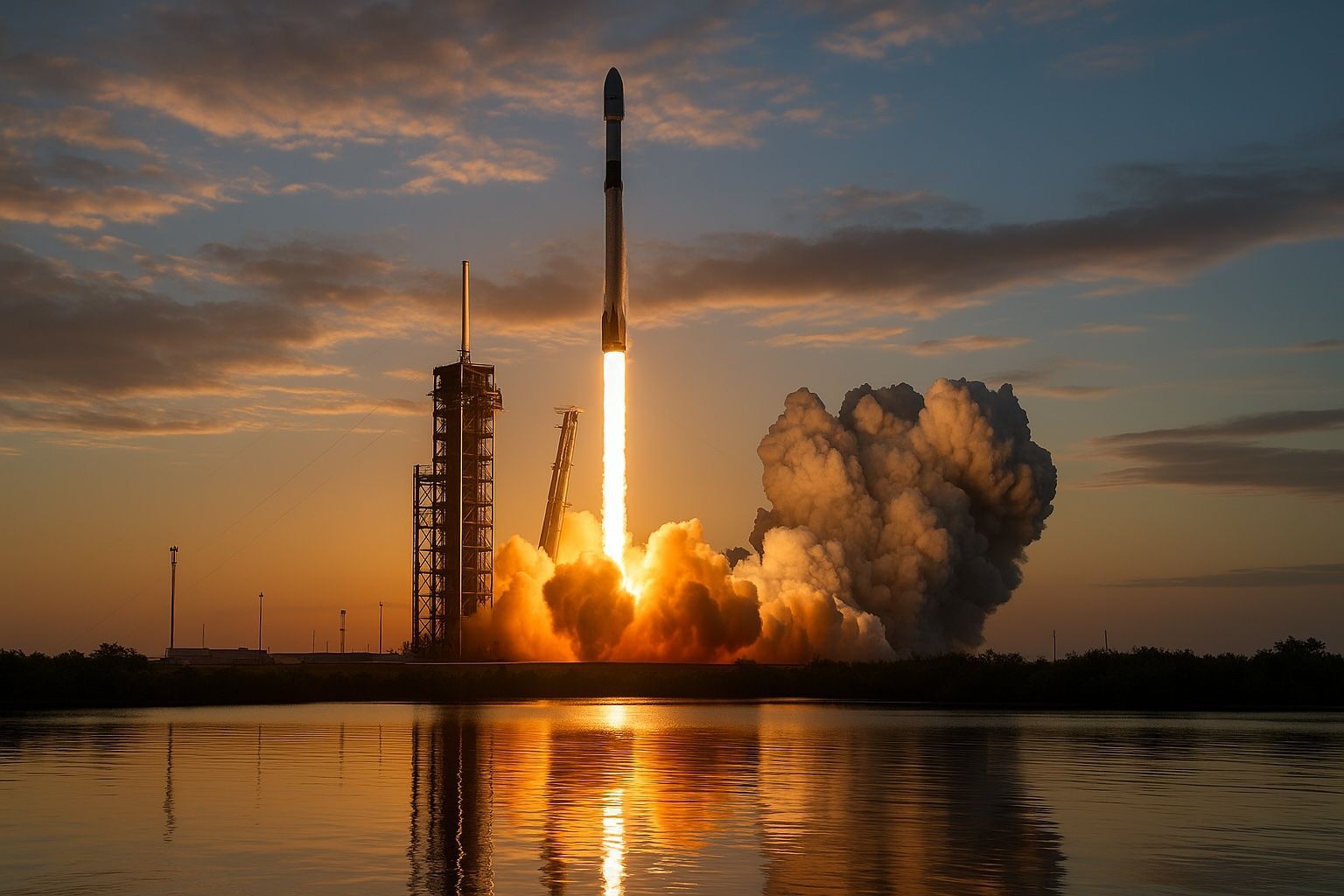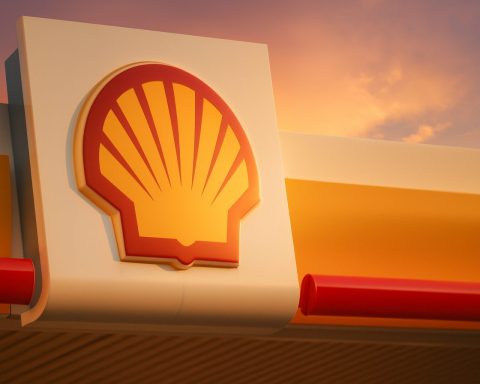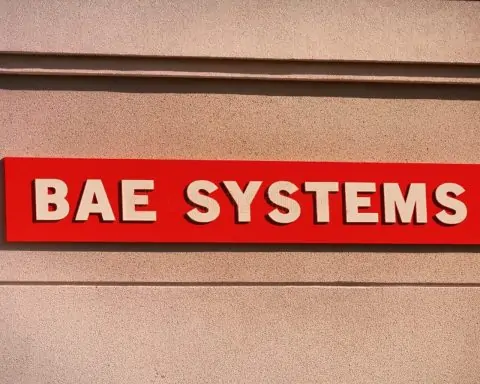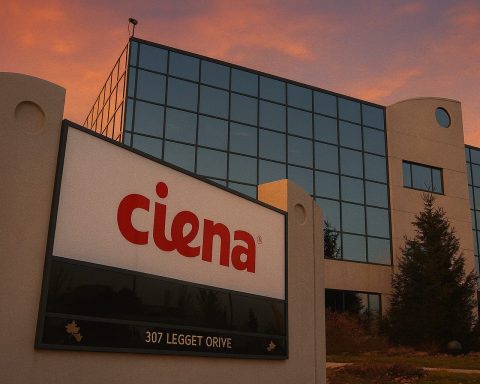- September 2008: Falcon 1 reached orbit on its fourth flight, becoming the first privately developed liquid-fuel rocket to orbit Earth.
- December 2008: NASA awarded SpaceX a $1.6 billion Commercial Resupply Services contract to deliver cargo to the ISS.
- May 2012: Dragon cargo capsule became the first commercial spacecraft to rendezvous with and deliver cargo to the International Space Station.
- December 21, 2015: Falcon 9 first stage landed at Cape Canaveral, the world’s first orbital-class rocket to land.
- March 30, 2017: SpaceX re-launched a previously flown Falcon 9 booster on the SES-10 mission, the first orbital rocket reuse.
- May 30, 2020: SpaceX’s Crew Dragon carried NASA astronauts to the ISS on the Demo-2 mission, the first time a private company launched humans into orbit.
- May 2019: SpaceX launched the first large batch of Starlink internet satellites.
- April 20, 2023: Starship conducted its first integrated flight from Starbase, Texas, about four minutes into flight, with a height of ~120 meters and nearly 5,000 tonnes fully fueled.
- April 2021: NASA awarded SpaceX a $2.9 billion contract to develop Starship as the Artemis III lunar lander, targeted for 2025–2026.
- As of May 30, 2025: Starlink comprises approximately 7,578 satellites in orbit, with about 7,556 operational, making it the largest satellite constellation.
Company History and Founding
SpaceX (Space Exploration Technologies Corp.) was founded by entrepreneur Elon Musk in 2002. Musk invested $100 million of his own money (from his PayPal sale) to start the company, driven by a vision of dramatically reducing space launch costs and enabling the colonization of Mars. The initial motivation came after Musk’s failed attempt to buy affordable rockets from Russia for a “Mars Oasis” project – a plan to send a greenhouse to Mars to inspire public interest. Frustrated by the high cost of rockets, Musk decided to build reusable rockets himself. Early on, SpaceX set up headquarters in Hawthorne, California, and assembled a small team of engineers to develop a low-cost launch vehicle from scratch.
SpaceX’s first rocket, the Falcon 1, was a two-stage small orbital launcher designed to prove the company’s approach. After three initial failures, Falcon 1 succeeded in reaching orbit on its fourth attempt in September 2008 – marking the first privately developed liquid-fuel rocket to orbit Earth. This success was pivotal. It led to NASA awarding SpaceX a $1.6 billion contract in late 2008 to transport cargo to the International Space Station (ISS) under the Commercial Resupply Services program [1]. The infusion of NASA funding and vote of confidence saved SpaceX from near bankruptcy and enabled development of a larger rocket (Falcon 9) and spacecraft (Dragon). By 2010, SpaceX had grown substantially and was on its way to making history in commercial spaceflight.
Mission and Vision
SpaceX’s mission is to “revolutionize space technology” by lowering costs and making space travel more frequent and accessible, ultimately to make humanity multiplanetary. In official statements, the company emphasizes enabling human life on Mars as a long-term goal. Musk has often expressed that becoming a spacefaring, multi-planet species will inspire optimism about the future: “You want to wake up in the morning and think the future is going to be great… and I can’t think of anything more exciting than going out there and being among the stars.” This vision underpins SpaceX’s projects, from reusable rockets to massive Mars-colonization vehicles. In practical terms, SpaceX’s objectives include drastically reducing launch costs (by developing reusable launch systems) and building technology to transport humans to Mars in the coming decades. By pursuing these ambitions, SpaceX aims to not only transform the launch industry but also ensure the long-term survival and expansion of humanity beyond Earth.
Key Technologies and Vehicles
SpaceX has developed a family of rockets and spacecraft with cutting-edge features, especially emphasizing reusability. Its key technologies include the Falcon series of rockets, the Dragon spacecraft, the next-generation Starship, and innovative reusable launch and landing systems.
Falcon Rockets: Falcon 1, Falcon 9, and Falcon Heavy
The Falcon 9 is SpaceX’s workhorse orbital rocket. First launched in 2010, Falcon 9 is a two-stage, medium-lift launch vehicle capable of delivering payloads to orbit and beyond. It was designed for partial reuse – the first stage (booster) can return and land after separating from the second stage. Falcon 9’s first successful booster landing occurred in December 2015, making it the first orbital-class rocket to return intact. SpaceX achieved the first reflight of a Falcon 9 booster in March 2017, demonstrating that a landed booster could be refurbished and launched again. This reusability has become routine: as of mid-2025, Falcon 9 boosters have landed over 440 times and certain individual boosters have flown as many as 28 missions each. Falcon 9 has a strong record for reliability and a high launch cadence – with over 480 successful launches to date, it is the most-launched American rocket in history. Notably, on January 24, 2021, a Falcon 9 set a record by deploying 143 satellites in one launch, the most ever on a single mission.
For heavier payloads, SpaceX developed the Falcon Heavy, essentially three Falcon 9 cores strapped together. Falcon Heavy made its debut in February 2018, launching a demonstration payload (Musk’s personal Tesla Roadster) toward deep space. With 27 Merlin engines, Falcon Heavy generates over 5 million pounds of thrust at liftoff and is currently the most powerful operational rocket aside from NASA’s SLS booster. In its maiden flight, Falcon Heavy successfully landed two of its first-stage boosters back on Earth, a dramatic display of synchronized reusability. Falcon Heavy can lift ~64 metric tons to low Earth orbit and has been used for large satellites and deep-space probes (such as launching NASA’s Psyche mission in 2023). While human-rating Falcon Heavy was considered, SpaceX has opted to focus human spaceflight efforts on newer vehicles.
(Falcon 1, SpaceX’s very first rocket, was a much smaller booster that flew 2006–2009. Its success in 2008 proved a private company could reach orbit, but Falcon 1 was retired as SpaceX moved to larger rockets.)
Dragon Spacecraft (Cargo and Crew)
Dragon is a reusable orbital spacecraft developed by SpaceX to carry cargo – and later crew – to the International Space Station. The first-generation Cargo Dragon made history in May 2012 when it became the first commercial spacecraft ever to rendezvous with and deliver cargo to the ISS. Dragon capsules are maneuverable, pressurized vehicles that launch atop Falcon 9 and return to Earth via parachute-assisted splashdown. Under NASA’s Commercial Resupply Services, SpaceX’s Dragons have flown numerous missions carrying food, experiments, and supplies to ISS since 2012.
Building on that design, SpaceX developed Crew Dragon (Dragon 2) to carry astronauts. In May 2020, SpaceX launched astronauts Doug Hurley and Bob Behnken to the ISS on a Crew Dragon during the Demo-2 mission – the first time a private company launched humans into orbit. Crew Dragon was subsequently certified by NASA for operational crew rotations, ending the gap in U.S. human launch capability since the Shuttle’s retirement. The Crew Dragon capsule can carry up to 4 astronauts (7 in a different configuration) and features an advanced touchscreen cockpit and launch escape system for crew safety. SpaceX now regularly ferries astronaut crews for NASA (and has also flown private crews, such as the Inspiration4 mission in 2021 and Axiom Space missions to ISS). Both cargo and crew Dragons are reusable; SpaceX has reflown Dragon capsules many times, further reducing costs. The Dragon program’s success demonstrated the viability of public-private partnerships in crewed spaceflight and solidified SpaceX’s role as a key partner for NASA.
Starship: Next-Generation Reusable Rocket
Starship is SpaceX’s ambitious next-generation launch system – a fully reusable, two-stage super heavy-lift rocket currently in development. The Starship system consists of a giant first-stage booster (called Super Heavy) and an upper-stage spacecraft (also called Starship) that together will be the largest and most powerful rocket ever built. In April 2023, SpaceX conducted the first integrated flight test of Starship, which at nearly 120 meters tall and almost 5,000 tonnes fully fueled, became the most massive and most powerful vehicle to ever fly. Starship is powered by SpaceX’s new Raptor engines, which burn liquid methane and liquid oxygen in a high-efficiency full-flow staged combustion cycle. Both stages are constructed of stainless steel and designed to be recovered and reused.
The vision for Starship is to enable unprecedented payload capacity and full reuse. The vehicle’s payload to low Earth orbit is around 100–150 tons (when refueled in orbit), far surpassing Falcon Heavy. SpaceX plans for Starship to carry cargo and up to 100 people on long-duration voyages to the Moon and Mars. Critically, both the booster and the Starship spacecraft are intended to be recovered: the Super Heavy booster will propulsively fly back and be “caught” by a ground tower’s mechanical arms, and the Starship spacecraft is designed to re-enter Earth’s atmosphere and land back vertically. This full reuse architecture, combined with in-orbit refueling (transferring propellant between Starships), aims to reduce the cost per launch hundredfold compared to expendable rockets. As of 2025, Starship is still in prototype testing. SpaceX has conducted multiple suborbital flights of Starship test vehicles (several high-altitude hops in 2020–2021) and two orbital-class flight tests in 2023–2024. These tests have demonstrated major milestones like liftoff of the integrated Super Heavy booster, stage separation, and even the return and catching of a booster, though the upper-stage Starship has not yet achieved a full orbital insertion (test flights have ended in mid-flight termination). Despite the challenges, Starship’s development is progressing iteratively, with the goal of an operational launch system that will replace Falcon 9 and Falcon Heavy in the future [2]. Starship is central to SpaceX’s long-term plans for lunar missions (it was selected as NASA’s lunar lander for Artemis) and Mars colonization.
Reusability Innovations
A hallmark of SpaceX’s technology is rocket reusability. Unlike traditional launch vehicles that are discarded after one use, SpaceX engineered its Falcon rockets to fly back and be used again. The primary focus was on recovering the Falcon 9 first stage (the most expensive part of the rocket). SpaceX developed GPS-guided, throttleable descent burns and landing legs that deploy from the booster, enabling it to perform precise vertical landings either on a ground pad or on autonomous droneship barges at sea. Starting with the historic first landing in 2015, SpaceX systematically improved its landing success rate. By mid-2020s, booster landings became almost routine, and many boosters have been reused 10+ times each. SpaceX also recovers and reuses payload fairings (the nosecone halves), fishing them out of the ocean after they parachute down, to further save on costs.
Rapid reusability is the ultimate goal. SpaceX draws analogy to commercial airliners, which fly multiple times per day rather than being thrown away after one flight. By refurbishing rockets instead of building a new one for every launch, SpaceX drastically lowers the marginal cost of each mission. In fact, reusability has enabled SpaceX to offer launch prices tens of millions of dollars cheaper than competitors, disrupting the launch market. SpaceX’s long-term approach is to make Starship fully and quickly reusable – the Starship booster and ship are designed to be rapidly turned around for another launch, with minimal inspection or refurbishment. If successful, this could enable daily launches or multiple launches per day, a paradigm shift from the current industry. Reusability has already allowed SpaceX to achieve a high launch cadence and dominate global launch rates (as discussed below). It is the pivotal technology for the company’s future ambitions (particularly for the high flight rates needed to ferry large numbers of people and cargo to Mars).
Inside SpaceX’s Hawthorne headquarters, displaying a flown Dragon spacecraft (upper left) and a Falcon 9 first-stage landing leg (bottom). These artifacts represent SpaceX’s pioneering achievements in reusable rockets and spacecraft. The Dragon was the first commercial capsule to reach the ISS in 2012, and Falcon 9’s deployable landing legs enabled the first-ever orbital booster landings in 2015. Such innovations in reusability have been key to reducing launch costs.
Major Missions and Launches
Since its first orbital launch in 2008, SpaceX has executed many missions that marked milestones for the company and the space industry. Below is a narrative of some major missions and launch achievements, from early days to ongoing operations:
- Falcon 1’s Orbital Success (2008): After several failures, the fourth flight of the small Falcon 1 rocket on September 28, 2008, reached orbit, making SpaceX the first private entity to launch a liquid-fueled booster into Earth orbit. This achievement proved SpaceX’s basic launch capability and attracted serious industry attention.
- COTS Demo and First ISS Delivery (2010–2012): SpaceX developed the Falcon 9 rocket and Dragon capsule in parallel under NASA’s Commercial Orbital Transportation Services (COTS) program. In December 2010, a Falcon 9 launched the Dragon on a demonstration orbit and safely returned it – the first orbital capsule recovery by a private company. Then in May 2012, SpaceX’s Dragon rendezvoused and berthed with the International Space Station, delivering cargo – a historic first for commercial spacecraft to the ISS. By October 2012, SpaceX began regular Commercial Resupply Services (CRS) missions for NASA, establishing a reliable cargo link to the ISS.
- Rocket Landing Breakthrough (2015): On December 21, 2015, the Falcon 9 flight 20 carried satellites to orbit and then the first stage booster returned to perform a powered landing at Cape Canaveral’s Landing Zone 1. This was the world’s first successful landing of an orbital-class rocket stage, a watershed moment in rocketry. A few months later, in April 2016, SpaceX also landed a booster on its ocean droneship “Of Course I Still Love You”, proving the ability to recover rockets at sea (critical for high-velocity missions). These feats demonstrated that reusable rockets were feasible, silencing many skeptics and paving the way to routine re-flights.
- First Reflight and Rapid Cadence (2017–2018): In March 2017, SpaceX re-launched a previously flown Falcon 9 first stage on a commercial satellite mission – the first reuse of an orbital rocket in history. Successful reflight confirmed the economic promise of reusability. SpaceX’s launch tempo accelerated thereafter. By 2017–2018, SpaceX was launching Falcon 9s at a cadence of about 1–2 times per month, including many missions for commercial satellites. In February 2018, SpaceX launched the Falcon Heavy on its maiden flight, sending a test payload (a Tesla car) into heliocentric orbit. This demonstration captured worldwide attention as Falcon Heavy’s two side boosters landed in unison on land (the center core was lost offshore). Falcon Heavy became the most capable launch vehicle in operation at the time, and later that year it flew its first commercial payloads.
- Human Spaceflight and Crew Missions (2020–Present): On May 30, 2020, SpaceX’s Crew Dragon carried NASA astronauts to the ISS on the Demo-2 mission, marking the return of human orbital spaceflight to U.S. soilafter the Space Shuttle, and the first ever by a private company. This successful mission inaugurated SpaceX’s role in operational crew transport; since then, SpaceX has flown numerous crewed missions: regular NASA astronaut rotations (Crew-1, Crew-2, etc.), private orbital flights like Inspiration4 (the first all-civilian orbital mission, Sept 2021), and commercial AX- missions carrying private astronauts to the ISS (through Axiom Space). SpaceX’s capability to launch humans has been a game-changer, reducing reliance on Russian Soyuz and expanding opportunities for commercial human spaceflight.
- Starlink Mega-Constellation Launches (2019–Present): In May 2019, SpaceX launched the first large batch of Starlink internet satellites. Since then, Starlink missions have become a very frequent part of SpaceX’s manifest – the company often conducts multiple Starlink launches per month, each Falcon 9 carrying 50–60 satellites. This contributed to SpaceX’s rapidly increasing launch counts. By 2023–2024, Starlink deployment made SpaceX responsible for a huge portion of all worldwide launch activity. (More on Starlink in its own section below.)
- Record Launch Rates (2022–2023): SpaceX’s reuse-centric model enabled a dramatic ramp-up in launch frequency. In 2022 the company completed 61 orbital launches, the most of any single provider that year. This record was quickly eclipsed – in 2023 SpaceX launched 96 to 98 missions (sources vary, around 96 successful), which accounted for nearly half of all global orbital launches. For comparison, the entire country of China was second with 67 launches in 2023. SpaceX’s ability to turn around rockets quickly (sometimes re-launching boosters in a matter of weeks) has led to a sustained high cadence. By 2023, Falcon 9 was often launching every 4–5 days on average, a stunning pace that continues to increase. SpaceX also set payload-to-orbit mass records, due to the sheer number of Starlink satellites and other payloads delivered.
- Starship Test Flights (2023–2025): A major recent milestone was the April 20, 2023 test flight of Starship – the first full-stack launch of SpaceX’s next-gen rocket. Starship lifted off successfully from Starbase, Texas, and flew for about four minutes, but it experienced multiple engine failures, did not achieve stage separation, and ultimately was intentionally exploded before completing orbit. Despite the explosive end, the test demonstrated considerable progress (the giant booster cleared the pad and flew supersonically). After pad repairs and upgrades, SpaceX attempted subsequent Starship test flights. By early 2025, a Starship test (Flight 8, March 2025) achieved stage separation and even caught the booster back on the launch tower, though the upper stage lost control before orbital velocity and was destroyed. These iterative tests are gradually validating Starship’s systems. SpaceX aims for the first orbital Starship launch and recovery in the near future, which will be a breakthrough for the Starship program. Once operational, Starship is expected to handle major missions such as lunar landings and high-volume satellite deployments.
In summary, SpaceX’s launch record spans from early demonstration flights to routine missions supporting government and commercial partners. The company’s trajectory has been one of pushing boundaries: first to prove private rockets can reach orbit, then to drastically increase reliability and reuse, and now to test vehicles of unprecedented scale. Ongoing missions include regular ISS resupply and crew transport for NASA, continual Starlink satellite deployments, national security launches for the U.S. military, and commercial satellite launches for clients worldwide. With hundreds of launches under its belt, SpaceX has transitioned from a newcomer to the dominant player in the global launch industry.
Starlink Satellite Project
Starlink is SpaceX’s satellite internet constellation and one of its most impactful projects. Announced in the mid-2010s and actively deployed since 2019, Starlink’s goal is to provide high-speed, low-latency broadband internet globally, especially to remote and underserved areas. The system consists of thousands of small satellites in low Earth orbit that communicate with user terminals on the ground. By flying a “mesh” of satellites at ~550 km altitude, Starlink can beam internet coverage to practically any point on Earth.
The scale of Starlink is unprecedented. SpaceX began regular Starlink launches in May 2019 and has rapidly built up the constellation. As of May 30, 2025, there are approximately 7,578 Starlink satellites in orbit (about 7,556 of them operational). This makes Starlink by far the largest satellite constellation ever deployed – accounting for a large fraction of all active satellites. (For perspective, before Starlink, there were on the order of only a few thousand active satellites total in orbit.) SpaceX ultimately envisions 12,000 or more Starlink satellites, potentially expanding to 30,000+ in later phases. The satellites are mass-produced at SpaceX’s Seattle-area facility and constantly launched in batches of 50+ aboard Falcon 9 rockets. Newer Starlink satellites (the “V2 mini” versions) are larger and more advanced, offering more bandwidth per satellite. Eventually, SpaceX plans to use Starship to deploy even bigger Starlink V2 satellites that will further increase network capacity.
Starlink began a public beta service in 2020 and has since grown a substantial customer base. By the end of 2022, SpaceX announced over 1 million active subscribers, and this jumped to 4 million+ subscribers by September 2024. (Recent unofficial estimates put Starlink over 5 million users globally as of 2025, reflecting rapid growth.) Customers include individual households in rural areas, businesses, RV and boat owners, airlines (in-flight WiFi), and even governments. The service can deliver download speeds in the 50–200 Mbps range to consumer terminals – far superior to traditional geostationary satellite internet. Starlink’s latency (~20–40 ms) is low enough for video calls and online gaming, thanks to the satellites’ low orbits.
Financially, Starlink has quickly become a major component of SpaceX’s business. Initially, it required a massive investment (SpaceX has spent billions on development and deployment). But by 2023, Starlink started turning a profit. In 2024 Starlink was estimated to generate around $7–8 billion in revenue, making up over half of SpaceX’s total revenue [3] [4]. The subscriber base and revenue are now growing exponentially as service coverage expands. SpaceX is leveraging Starlink income to fund other projects (like Starship) and has even higher revenue expectations from Starlink in coming years.
Starlink has also drawn attention for its impact on astronomy and space traffic. Astronomers have raised concerns that the thousands of bright satellites can streak through telescope images, disrupting observations of the night sky [5]. SpaceX has tried to mitigate this by adding visors and anti-reflective coatings to newer Starlink satellites to dim their visibility. There are also concerns about orbital debris and collision risk, given Starlink’s sheer number of satellites – it’s cited as a leading contributor to close approaches in orbit [6]. SpaceX argues that Starlink satellites are equipped with autonomous collision avoidance and are designed to deorbit at end-of-life to minimize space debris. The company is working with astronomers and regulatory bodies to address these issues even as deployments continue.
Notably, Starlink has proven strategically valuable in world events. The network has been used to provide connectivity in disaster zones and conflict areas. For example, Starlink terminals were sent to Ukraine in 2022 to keep the country online during the war, after internet infrastructure was damaged. SpaceX has a contract with the U.S. Department of Defense for Starlink services in Ukraine. SpaceX also introduced Starshield, a government/military-focused version of Starlink that offers more secure or specialized satellite services for national security customers.
Overall, the Starlink project exemplifies SpaceX’s ambitious, vertically-integrated approach: build an entire telecom satellite constellation to both generate revenue and further the company’s mission. If successful at full scale, Starlink could fund SpaceX’s Mars plans and connect millions of people to the internet in the process. It is a high-risk, high-reward endeavor – but as of 2025, Starlink is operational, rapidly expanding, and already the world’s largest satellite network, heralding a new era of space-based internet.
Mars Colonization Plans and Long-Term Goals
From the outset, Elon Musk’s driving vision for SpaceX has been to enable the colonization of Mars. This long-term goal is frequently cited as the company’s ultimate purpose – essentially, to make humans a “multi-planetary species”. Musk argues that establishing a self-sustaining city on Mars would serve as a “backup” for human civilization in case of catastrophes on Earth, and would fulfill a profound scientific and exploratory destiny for humanity.
SpaceX’s Mars strategy centers on the Starship launch system. Starship is being designed specifically to transport large numbers of people and cargo to Mars. The fully reusable nature of Starship, plus orbital refueling, would drastically lower the cost per ton to Mars compared to any prior technology. According to Musk, a ticket price on Starship could eventually be in the low hundreds of thousands of dollars per person, making mass migration at least conceivable. Starship’s huge payload (100+ tons) and passenger capacity (perhaps 100 people per trip) are considered essential for ferrying the materials to build a colony.
SpaceX has outlined a stepwise plan: send uncrewed Starship missions to Mars for recon and ISRU (in-situ resource utilization) as early as the mid-2020s, followed by the first crewed missions later on. In fact, SpaceX’s website boldly stated a plan to land the first Starships on Mars by 2026 as technology demonstrators. These initial landings would carry experimental cargo, test entry/landing techniques, and scout resources (like water ice for fuel). The next phase would be to land the first humans on Mars, potentially in the early 2030s if schedules allow. Those astronauts would start constructing basic habitats, power systems, and fuel production plants (e.g. making methane/oxygen rocket propellant from Martian water and CO₂). Finally, through the 2030s and 2040s, SpaceX envisions scaling up Mars transport – sending fleets of Starships during each launch window (every 26 months when Earth-Mars alignment is favorable) – to deliver thousands of tons of equipment and eventually tens of thousands of people.
Musk has spoken of an aspirational goal of building a Martian city of around one million inhabitants by mid-century. This would require hundreds of Starship flights, significant infrastructure on Mars, and solving many technical and human challenges (from radiation protection to life support to governance of a new colony). SpaceX is tackling some of the technical pieces: for instance, developing life support systems, surface power units, and figuring out how to harvest resources on Mars. The company is also working on closed-loop life support and even prototyping greenhouse concepts for Mars agriculture. While these details are still preliminary, SpaceX’s rapid progress on Starship indicates a serious intent to push the boundaries.
It’s important to note that these timelines (like 2026 for cargo landings or 2029 for first crew) are extremely ambitious and likely to slip. Sending humans to Mars will also depend on broader factors outside SpaceX’s control (international partnerships, funding, and astronaut safety considerations). However, SpaceX has undeniably refocused the space industry on Mars in a concrete way. NASA has even aligned part of its Artemis Moon program as a stepping stone to Mars, in synergy with SpaceX’s ambitions. SpaceX’s development tests for Starship (high-altitude flights, heat shield trials, etc.) are directly aimed at learning how to land large vehicles on Mars and keep crews alive during the months-long transit.
In summary, SpaceX’s long-term goal is to create a permanent, sustainable human presence on Mars. Every major project at SpaceX – Starship, Starlink (as a funding source), life support R&D, etc. – feeds into this Mars vision. While there is no guarantee of success on the timeline Musk hopes, SpaceX has set in motion the technical groundwork for interplanetary travel. As Musk put it, “Making life multiplanetary” is not just a slogan for SpaceX, but the guiding principle behind the company’s existence. If Starship becomes operational, humanity’s first real steps toward a Mars colony could happen in the coming decades, with SpaceX leading the way.
Partnerships and Collaborations
SpaceX’s rise has been fueled by significant partnerships and contracts, especially with U.S. government agencies. The most important collaborator has been NASA, which helped fund SpaceX’s early development and later became a major customer. Through competitive programs, NASA partnered with SpaceX to outsource certain spaceflight capabilities to the private sector:
- NASA COTS and CRS: In 2006–2008, under the Commercial Orbital Transportation Services initiative, NASA provided milestone-based seed funding for SpaceX to develop the Falcon 9 rocket and Dragon cargo capsule. Following Falcon 1’s success, NASA awarded SpaceX a $1.6 billion Commercial Resupply Services contract in 2008 to deliver cargo to the ISS [7]. This long-term contract (later extended and expanded) guaranteed SpaceX a steady cadence of missions and essentially underwrote the development of Dragon. SpaceX successfully delivered on COTS by 2012 (Dragon’s ISS demos) and then began fulfilling CRS cargo flights regularly. This government-industry partnership gave NASA a lower-cost cargo delivery option and gave SpaceX crucial revenue and experience.
- Commercial Crew Program: In 2014, NASA selected SpaceX (along with Boeing) for the Commercial Crew Program to develop crew-rated spacecraft to ferry astronauts to the ISS. NASA awarded SpaceX about $2.6 billion to develop Crew Dragon, test it, and fly 6 operational missions. This partnership culminated in the first crewed Dragon flight in 2020. Since then, NASA has extended SpaceX’s crew contract multiple times (purchasing additional Crew Dragon flights through at least Crew-14 in the late 2020s). By working with SpaceX, NASA restored American crew launch capability for a fraction of what a government-developed system might have cost. The success has been mutual: NASA achieved its goals, and SpaceX gained prestige and expertise in human spaceflight. SpaceX, NASA, and the U.S. Armed Forces now work closely via such governmental contracts to advance space capabilities.
- Artemis Program (Moon Missions): In April 2021, NASA announced SpaceX’s Starship won the competition to be the Human Landing System (HLS) for the Artemis program’s first crewed Moon landing. SpaceX received a $2.9 billion contract to adapt Starship into a lunar lander variant that will carry astronauts from lunar orbit (the Orion spacecraft or Gateway station) down to the Moon’s surface and back. This mission, Artemis III, is targeted for 2025–2026 and would be the first human Moon landing since Apollo. In 2023, NASA additionally selected a second provider (Blue Origin) for a later lander, but SpaceX remains deeply involved – Starship is scheduled for Artemis III and likely Artemis IV/V. This partnership is striking because NASA entrusted a critical human exploration mission to SpaceX’s innovative (and unproven) Starship. If successful, it could showcase a new paradigm of NASA leveraging commercial super-heavy vehicles for deep space exploration. Separately, NASA also contracted SpaceX in 2020 to deliver cargo to the planned lunar Gateway outpost: SpaceX will use a modified Dragon XL spacecraft launched by Falcon Heavy to resupply the Gateway in lunar orbit. NASA officials have praised SpaceX’s contributions, noting that SpaceX has been a reliable partner since 2012 for ISS services and will now extend that partnership “beyond Earth’s orbit” for Artemis.
- U.S. Military and Government: SpaceX has contracts with the U.S. Department of Defense and other government agencies for launch and satellite services. Falcon 9 and Falcon Heavy are certified for National Security Space Launch missions, flying payloads for the Air Force/Space Force (e.g. GPS satellites, military comm satellites). SpaceX’s ability to offer lower-cost launches has saved the military money and introduced competition in a sector once dominated by a single alliance (ULA). SpaceX also launches missions for the National Reconnaissance Office (NRO). In recent years, the Pentagon has become a customer of Starlink as well – the Starshield program is tailoring Starlink technology for military-specific uses. SpaceX received a contract to provide Starlink services to the Air Force in Europe and Africa, and as mentioned, DoD pays for Starlink to support Ukraine operations. These collaborations indicate SpaceX is now a key player in national security space, trusted to handle sensitive missions.
- International and Commercial Partners: SpaceX’s client list includes many foreign and commercial entities. The company has launched satellites for countries like Argentina, Bangladesh, Turkey, Israel, and many others – often providing inexpensive access to orbit for nations without their own launch vehicles. SpaceX also works with satellite operators (e.g. launching communications satellites for companies such as SES, Intelsat, Viasat, etc.). In the commercial human spaceflight arena, SpaceX partnered with Axiom Space, which arranges private astronaut missions using Crew Dragon to the ISS. SpaceX will also fly the dearMoon mission (a privately funded Starship flight around the Moon carrying artist civilians, led by Japanese billionaire Yusaku Maezawa) – a unique collaboration between SpaceX and a private patron to further space tourism. Additionally, SpaceX has teamed with technology companies: for instance, Google and Microsoft have agreements to host Starlink ground stations in their data centers to integrate satellite internet with cloud services. Google also notably invested $900 million in SpaceX in 2015 for a small ownership stake, as part of a strategic partnership in satellite tech.
SpaceX’s relationships often blur the line between customer and collaborator. NASA, once a traditional government contractor oversight body, now works alongside SpaceX as a partner in many ways, sharing expertise (e.g., NASA advisors for Crew Dragon’s safety) while buying services. SpaceX’s success has also pressured other companies and countries to pursue similar public-private partnership models. All in all, collaborations with NASA and others have provided SpaceX both funding and validation, while SpaceX in return has delivered innovative solutions (cheaper cargo delivery, American crew launch, etc.) that benefit these partners. This symbiosis is epitomized by NASA’s statement: “Through our partnership with NASA, SpaceX has been delivering scientific research and critical supplies to the ISS since 2012, and we are honored to continue that work beyond Earth’s orbit”. Going forward, SpaceX’s partnerships (especially for Artemis and potential Mars initiatives) will remain vital as space exploration increasingly becomes a collaborative effort between private visionaries and public institutions.
Financial and Commercial Aspects
SpaceX is a privately held company and has had a unique financial journey, from scrappy startup to one of the highest-valued aerospace firms in the world. Key points about SpaceX’s financial and commercial aspects include:
- Funding and Ownership: Elon Musk provided the initial capital ($100 million) to start SpaceX. In its early years, SpaceX operated leanly and survived mostly on Musk’s funds and revenue from a few launch contracts. After the Falcon 1 failures, the 2008 NASA contract (worth $1.6B for future services) effectively saved the company. Over time, SpaceX attracted outside investors in private funding rounds. Notably, in 2015 Google and Fidelity invested ~$1 billion, signaling confidence in SpaceX’s satellite plans. SpaceX has continued to raise funds privately to support Starlink and Starship development, raising over $9.7 billion in total since 2002 [8]. Musk remains the majority owner (around 54% equity share) and maintains control, while investors like Founders Fund, Fidelity, Google, and others hold significant minority stakes [9]. SpaceX has not gone public and Musk has stated the company won’t IPO until its Mars ambitions are firmly in place (to avoid short-term shareholder pressure).
- Revenue Streams: SpaceX earns revenue from multiple lines of business. Historically, launch services were the primary source – charging commercial customers and government agencies to launch satellites or payloads on Falcon rockets. SpaceX’s aggressively low pricing (roughly $62 million for a Falcon 9, under $100 million for Falcon Heavy in expendable mode) undercut competitors and drew a large share of the commercial launch market. As of the early 2020s, SpaceX has become the world’s largest launch provider by volume of business. However, the rise of Starlink has added a massive new revenue stream. By 2023–2024, Starlink internet subscriptions became SpaceX’s single biggest source of income, even surpassing launch revenues [10] [11]. For example, analysts estimate 2024 launch service revenue at around $5 billion, versus Starlink revenue at $7–8 billion [12] [13]. In addition, SpaceX earns money from military contracts (some launches and Starlink deals are paid by U.S. DoD), development contracts (NASA paid for Dragon/Crew development milestones), and smaller services like rideshare launch fees from small satellite customers. In 2022, SpaceX’s total revenue was reportedly $4–5 billion, growing to well over $8 billion in 2023, and on track for $13+ billion in 2024 [14]. This rapid growth is unusual in the launch industry and reflects SpaceX’s new position as both a launch provider and a telecom operator.
- Profitability and Investment: SpaceX has been pouring revenue into R&D, particularly Starship and Starlink, so its profitability has been modest until recently. The company was roughly breaking even or had small losses while scaling Starlink. According to reports, SpaceX became profitable in the first quarter of 2023 after a small net profit in 2022 [15] [16]. By 2024, with Starlink’s subscriber base, SpaceX likely turned a more substantial profit. But at the same time, capital expenditures remain very high (building thousands of satellites and giant rockets is expensive). Musk has mentioned that Starship development was largely internally funded by Falcon/Starlink profits and equity raises. The company’s strategy seems to be to reinvest heavily, betting on future payoff if Starship opens new markets (like point-to-point Earth travel or Mars transport).
- Valuation: SpaceX’s valuation in private markets has skyrocketed as the company demonstrated success. In 2012, after Dragon’s ISS trip, SpaceX was valued around $1–2 billion. By 2020 (after Crew Dragon’s success and Starlink’s beginnings), it was valued around $46 billion. The growth continued: by early 2023 SpaceX’s valuation reached $137 billion in a funding round [17]. In an internal share sale by the end of 2024, investors valued SpaceX at about $350 billion [18]. At a $350B valuation, SpaceX became one of the most valuable private companies in the world (worth more on paper than Boeing and Lockheed Martin combined) [19]. This valuation reflects high expectations for Starlink’s revenue potential and Starship’s transformative capabilities. It implies a revenue multiple in the mid-20s (i.e., 25× annual revenue) [20], which is huge but investors are pricing in growth. It’s worth noting that private valuations are not the same as public market caps, but clearly SpaceX’s success has made it an industry giant in terms of market value.
- Economic Disruption: SpaceX’s approach has had major commercial effects. By recovering boosters, SpaceX can launch more often and for less cost. This forced competitors (like Arianespace and ULA) to rethink their rocket designs for reusability or lower prices. SpaceX’s Starlink constellation also disrupted the satellite internet sector, pressuring traditional satellite operators and contributing to consolidation (e.g., Viasat’s merger with Inmarsat). Furthermore, SpaceX’s cost-effective option has enabled new space ventures – for instance, many small satellite startups have flourished partly because SpaceX’s Falcon 9 rideshare program makes launching dozens of smallsats relatively affordable. SpaceX has also vertically integrated many aspects (building its own engines, its own satellites, operating its launch sites), which is unusual in an industry that often relies on specialized suppliers. This gives SpaceX more control over costs and schedule.
In summary, SpaceX has evolved from a cash-strapped startup to a financially robust enterprise with diverse income streams. While it carries substantial risk (Starship development, maintaining Starlink’s growth, etc.), the company’s financial strategy has so far paid off – leveraging government support and commercial innovation to become a juggernaut. With an estimated revenue over $10 billion in 2024 and a dominant share of the launch market, SpaceX is positioned not only as an engineering leader but as a sustainable business. The continued backing of investors at high valuations suggests confidence that SpaceX’s bold projects (like Mars travel) could unlock even greater future returns, essentially commercializing space at scale in ways not seen before.
Notable Achievements and Records
SpaceX has amassed an impressive list of achievements and aerospace records in its two-decade history. Here are some of the most significant milestones and firsts attributed to SpaceX:
- First privately-developed liquid-fuel rocket to reach orbit (2008): SpaceX’s Falcon 1 achieved orbit on its fourth flight in September 2008. This was the first time a privately built liquid-propellant rocket (as opposed to a government project) orbited Earth, marking a turning point in commercial space capability.
- First commercial spacecraft to visit the ISS (2012): SpaceX’s Dragon cargo capsule became the first privately developed spacecraft to rendezvous with the International Space Station in May 2012 during the Dragon C2+ mission. Until then, only government vehicles had serviced the ISS. Dragon’s successful berthing demonstrated that commercial vehicles could perform complex orbital logistics.
- First propulsive landing of an orbital-class rocket (2015): In December 2015, the Falcon 9’s first stage executed a controlled return and vertical landing after launching a satellite payload. This feat – likened to “landing a pencil on its tip” from space – was a historic first in rocketry. It proved that boosters could be recovered intact, enabling reusability.
- First reuse of an orbital rocket (2017): SpaceX re-launched a previously flown Falcon 9 booster on March 30, 2017 (carrying the SES-10 satellite), achieving the world’s first reflight of an orbital rocket stage. The booster landed again, showing that rockets could have multiple lives. This milestone validated SpaceX’s reuse model and opened the door to rapid turnaround operations.
- Most launches by a single rocket in a year (2022 & 2023): SpaceX set records for launch cadence by a single organization. In 2022, SpaceX completed 61 orbital launches with its Falcon rocket family. The next year, 2023, SpaceX launched 96–98 missions (96 successful Falcon launches per one tally), surpassing any prior annual launch count by one provider. By 2023, SpaceX alone conducted about 43% of all worldwide orbital launches, outperforming even leading spacefaring nations. This is an unprecedented domination of launch activity by a private company.
- Highest rocket reusability records: SpaceX’s Falcon 9 boosters have been landed and reused far more than any launch vehicle in history. As of May 2025, SpaceX had landed Falcon boosters over 450 times and reflown boosters on dozens of missions. Individual first stages have flown up to 28 missions each, a record for reuse in orbital rocketry. This dramatically outstrips the Space Shuttle’s reuse count (max 39 flights for one orbiter, but with extensive refurbishment). SpaceX also achieved the fastest turnaround of an orbital rocket stage – in 2021, a Falcon 9 booster was relaunched just 27 days after its previous flight, showcasing quick reusability.
- Falcon Heavy – most powerful operational rocket (2018): When first launched in February 2018, Falcon Heavy became the most powerful rocket in operation by thrust, producing ~22 MN of thrust (5 million lbf) at liftoff. It held this title until NASA’s SLS launched in 2022. Falcon Heavy also set a record for heaviest commercial payloads and demonstrated simultaneous booster landings. It remains the rocket with the second-highest payload capacity currently available (exceeded only by SLS).
- First private company to launch astronauts to orbit (2020): SpaceX’s Crew Dragon Demo-2 mission (May 30, 2020) carried two NASA astronauts to the ISS, making SpaceX the first commercial company ever to send humans into Earth orbit. This achievement broke the monopoly of national agencies in crewed orbital flight and was a major milestone in human spaceflight history.
- Starlink – largest satellite constellation: By deploying thousands of Starlink satellites, SpaceX operates the biggest satellite network in the world. With over 7,000 satellites in orbit as of 2024, Starlink by itself represents a significant portion of all active satellites. SpaceX set records for number of satellites launched in a single mission (143) and in total deployed in a year. Starlink’s scale and impact (both positive in connectivity and challenging for astronomy) make it a record-setting project in its own right.
- Starship – largest and most powerful rocket ever flown (2023): On April 20, 2023, SpaceX launched Starship on its first integrated test flight, and even though it was not fully successful, that launch made Starship the biggest and most powerful rocket ever to fly. Starship’s height (120 m) and lift capability eclipse the Saturn V and Soviet Energia. Its 33-engine Super Heavy booster set a record for the most rocket engines ever ignited on a single vehicle at launch. When Starship reaches orbit, it will further secure its place in the record books (as the first fully reusable heavy-lift vehicle, among other superlatives).
These accomplishments illustrate SpaceX’s disruptive influence on aerospace. The company has broken long-standing barriers – achieving feats once thought improbable (like landing rockets), accelerating the pace of launches, and lowering costs. In doing so, SpaceX has earned numerous “firsts” and even Guinness World Records (for example, in 2023 Falcon 9 was recognized for the most launches of a single vehicle type in a year, and Starship for its unprecedented size and thrust). Beyond official records, SpaceX’s iterative approach has normalized rapidly evolving capabilities; what was a headline-grabbing novelty (like booster landings) is now almost routine. This track record of innovation and execution is a major reason SpaceX commands respect in the global space community.
Future Plans and Upcoming Missions
Looking ahead, SpaceX has an ambitious roadmap of projects and missions. The coming years promise to be eventful, as the company scales up existing operations and pushes new frontiers:
- Starship Development and Missions: Completing the development of Starship is SpaceX’s top priority. In 2024–2025, SpaceX will be conducting additional Starship test flights, aiming to achieve the first orbital flight and demonstrate full recovery of both stages. A key goal is to prove rapid reusability – flying Starship, landing it (and catching the booster), and relaunching with minimal downtime. SpaceX is also constructing a Starship launch site at NASA’s Kennedy Space Center (LC-39A) in Florida, which will enable higher flight rates once operational. If tests go well, SpaceX plans to use Starship for several landmark missions:
- DearMoon Mission: A private space tourism flight funded by Yusaku Maezawa, which will send a group of civilian artists on a Starship journey around the Moon. Originally slated for 2023, this mission will likely fly in 2024 or 2025, depending on Starship’s readiness. It will be the first crewed Starship flight and a major publicity event.
- NASA’s Artemis Lunar Landing: SpaceX is on contract to deliver a version of Starship as the Artemis III lunar lander. The target date for Artemis III is currently 2025 (though it may slip to 2026–27). In this mission, a Starship (HLS variant) will rendezvous with NASA’s Orion capsule in lunar orbit, transfer two astronauts, land them on the Moon’s surface, and then return them to orbit. Leading up to that, SpaceX must conduct at least one uncrewed demo landing on the Moon to prove the system. This means by around 2024 or 2025, SpaceX will attempt a Starship flight to the Moon (no crew, test landing and ascent) as a precursor. Following Artemis III, SpaceX is also contracted for Artemis IV: in 2028, a Starship will help deliver elements of the Lunar Gateway station and may perform another landing. Successfully executing these Artemis missions would firmly establish Starship’s capabilities.
- Mars Preparatory Missions: While human Mars flights are still many years out, SpaceX has floated the idea of sending an uncrewed Starship to Mars in the late 2020s. This could be as early as a 2026 launch window (which is very ambitious) or more realistically 2028. The first Mars-bound Starship might carry experiments, rover payloads, or infrastructure (like a mini habitat or solar panels) to test technologies on Mars. Such a mission would test entry, descent, and landing at Martian gravity. Elon Musk has suggested a crewed Mars attempt could follow in the early 2030s if progress is steady. While timelines are speculative, every Starship advancement brings that goal closer. SpaceX’s future manifest essentially treats Starship as the vehicle that will eventually do everything: satellite launches, deep-space missions, Moon landings, and Mars journeys.
- Point-to-Point Earth Transport: An outgrowth of Starship’s high-performance design is the concept of point-to-point suborbital travel on Earth – using Starship to fly passengers across the globe in under an hour (e.g. New York to Shanghai in 30 minutes, via a suborbital trajectory). SpaceX has mentioned this concept and even got an Air Force contract to study it. While not a near-term focus, in the future if Starship becomes safe and routine, SpaceX could disrupt long-haul aviation by offering ultra-fast trips through space. This remains a theoretical plan for now.
- Increasing Launch Cadence and Satellite Deployment: SpaceX is expected to continue its rapid launch cadence with Falcon 9/Falcon Heavy in the immediate future. In 2024, the company is aiming to exceed 100 launches (which would be another record). Some estimates suggest SpaceX is targeting 12 launches per month (144 launches in 2024) if possible. Achieving that will depend on operational factors and range availability, but clearly SpaceX intends to keep breaking its own records. Many of these launches will be Starlink missions as SpaceX fills out the first-generation constellation and begins launching Starlink Gen2 satellites. In fact, SpaceX has started launching “V2 Mini” Starlink satellites on Falcon 9 and plans to deploy the full-size V2 satellites (~1.25 ton each) using Starship when available. In coming years, we will see Starlink’s constellation grow toward the 12,000 satellite mark, providing near-global coverage including the polar regions. SpaceX will also roll out new Starlink services – for instance, Starlink for mobile (direct-to-cell phone service via satellites) is in development in partnership with T-Mobile, aiming to start text service by ~2024 and voice/data later. Additionally, Starlink’s second generation might include inter-satellite laser links for faster global network routing.
- Continuing NASA and Commercial Missions: SpaceX’s Crew Dragon will remain busy. NASA has missions planned with SpaceX at least twice a year to rotate ISS crews (Crew-7 flew in 2023; Crew-8, 9, etc. are on the manifest). These will go on until the ISS retirement (currently planned ~2030) or until Boeing’s Starliner is ready to share the load. SpaceX is also involved in private astronaut missions – for example, Axiom Space plans to fly Axiom-3 and Axiom-4 to the ISS in 2024/25 using Dragon. Further, the Polaris Program led by billionaire Jared Isaacman is a set of private missions with SpaceX: the first, Polaris Dawn, is slated for 2024, which will feature the first private spacewalk (two astronauts will step out of Dragon in orbit) and reach the highest Earth orbit since Apollo. A second Polaris mission will use Dragon, and a third is planned to be the first crewed Starship flight(possibly the second Starship to carry humans after dearMoon). These missions serve as tech demonstrations and fundraising for St. Jude, while pushing the envelope (Polaris Dawn will test a new SpaceX EVA suit, for instance).
- Starlink Business and Possible Spinoff: On the commercial side, Starlink will transition from rapid customer acquisition to focusing on profitability and reliability. By 2025, Starlink could have 10+ million users if growth continues. SpaceX will be launching upgraded satellites to improve bandwidth (the “V2” and then later iterations). There has been talk that SpaceX might eventually spin off Starlink as a separate company via IPO, once its cash flow is steady. Musk has been non-committal, but as Starlink matures, this could be revisited to raise capital. In the meantime, Starlink will expand into aviation and maritime markets more deeply (many airlines have signed up for Starlink WiFi, and cruise ships are adopting it). We’ll also see Starlink support more government and enterprise clients, and possibly bundling with Tesla products (Musk hinted Tesla cars might get Starlink connectivity). Internationally, Starlink will continue to seek regulatory approvals in more countries (currently ~130 countries covered). Competition is growing (e.g. Amazon’s Kuiper constellation aiming to launch in 2024), so SpaceX will push to maintain its first-mover advantage.
- New Launch Vehicles and Upgrades: While Starship is the main future vehicle, SpaceX will keep incrementally improving Falcon 9 and Falcon Heavy as needed. They have already introduced the “Block 5” version of Falcon 9 (since 2018) which is the final major iteration, designed for ~10 or more reuses. We might see some minor upgrades (like stretching tanks or improved engines) if it extends the life or performance. But largely, SpaceX is focusing R&D on Starship rather than developing any “Falcon 10.” The company also started work on a next-gen space suitfor Moon and Mars through a NASA contract – we should see SpaceX unveil a lunar suit for Artemis crews, leveraging what they learned from the Dragon pressure suits.
- Potential Future Projects: Elon Musk has hinted at other ventures SpaceX could tackle once Starship is operational. One is a SpaceX satellite launcher service for very large payloads (Starship itself covers that though). Another is point-to-point cargo delivery for the military (the USAF Rocket Cargo program envisions using Starship to deliver freight or humanitarian aid across the globe quickly – SpaceX is involved in that research). If Starship dramatically lowers cost, SpaceX might also pursue building a Mars base infrastructure business (transporting equipment for other orgs, etc.). There’s even speculation SpaceX could eventually develop a space station or lunar base elements in-house (for example, a Starship-derived space habitat). While nothing official, Musk’s philosophy is to vertically integrate if needed to achieve the Mars goal.
- Global Expansion: SpaceX is expanding its footprint with new facilities. Aside from the Texas Starbase and Florida launch sites, SpaceX in 2023 leased a large refinery site near Brownsville to produce methane fuel for Starship in-house. They are also building a new Starlink manufacturing facility. Internationally, SpaceX has discussed launching Starship from an ocean platform (they bought oil rigs to convert to “spaceports” but progress is slow). It wouldn’t be surprising if in the future SpaceX establishes launch or landing sites in other countries (with permission) for Starship point-to-point. Moreover, SpaceX will likely increase its presence in markets like South Asia, Africa, and South America via Starlink and perhaps training local crews for Starship operations as the network grows.
In essence, SpaceX’s future plans are about scaling up and breaking new ground: scale up launches (possibly to almost daily frequency), scale up Starlink (toward global coverage and profitability), and break new ground by making Starship operational – which in turn enables missions like lunar landings and eventually Mars voyages. The timeline for some of these is uncertain and contingent on technical progress and regulatory approvals (for instance, environmental clearances for Starship launches are an ongoing consideration). But if SpaceX’s past track record is any indication, the next few years will see milestones once thought decades away become reality. SpaceX’s aggressive schedule – such as targeting a Mars flight within this decade – serves to inspire its team and potentially the public, even if revisions happen along the way.
With a stream of upcoming missions (crew rotations, private astronaut flights, science satellite launches, etc.) and game-changing projects on the horizon, SpaceX is poised to continue reshaping the space landscape. The world will be watching events like the first fully reusable Starship orbit, the first Starship Moon landing, and the first humans embarking on a voyage to Mars. Each of these will be historic in its own right. SpaceX’s journey from 2002 startup to 2025 powerhouse has already been remarkable; its next chapters – aimed at the Moon, Mars, and beyond – could well define space exploration for the 21st century.
References
1. sacra.com, 2. en.wikipedia.org, 3. sacra.com, 4. sacra.com, 5. www.space.com, 6. www.space.com, 7. sacra.com, 8. sacra.com, 9. sacra.com, 10. sacra.com, 11. sacra.com, 12. sacra.com, 13. sacra.com, 14. sacra.com, 15. sacra.com, 16. sacra.com, 17. sacra.com, 18. sacra.com, 19. sacra.com, 20. sacra.com










